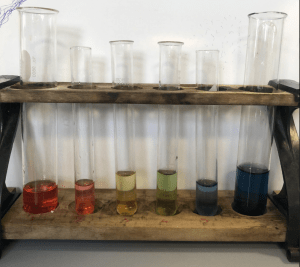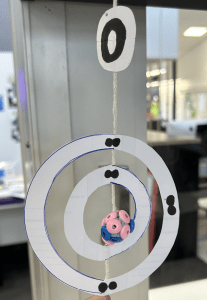Neutralisation
Aim: The aim of this experiment was to 6 colours of the rainbow by neutralising it using acids, and bases.
Equipment: For our experiment the equipment we used was sodium hydroxide as our base, hydrochloric acidas our acid, 6 test one for each colour, universiel indicata to show the colour and a testtube rack to hoe lthe test tubes.
Method: We added 2ml of acids in each test tube then added 10 drops of universal indicata so that teh colours would show up. Then after adding that we added varying amounts of sodium hydroxide our base to create the colours of the rainbow.
Results:

Discussion:
What is an acid? Acids are substance composed of one or more hydrogen atoms chemically bonded to one, or a group of, non-metal atoms.
What is base? Bases are usually metal oxides, metal oxides, metal carbonates or metal hydrogen carbonates. Many bases are insoluble (they do not dissolve in water). If a base does dissolve in water we call it an alkali.
Describe the process of neutralisation: A chemical reaction occurs when you mix together an acid and a base. The base cancels out the effects of the acid. The reaction is called a ‘neutralisation’ reaction because a neutral (pH 7) solution is made if you add just the right amount of acid and base together.
Conclusion:
Did it work? Yes I would say that my group had really good results in it working
Would you do anything different? I dont think I would change anything about the experiment because I would say that our experiment had really good results.
